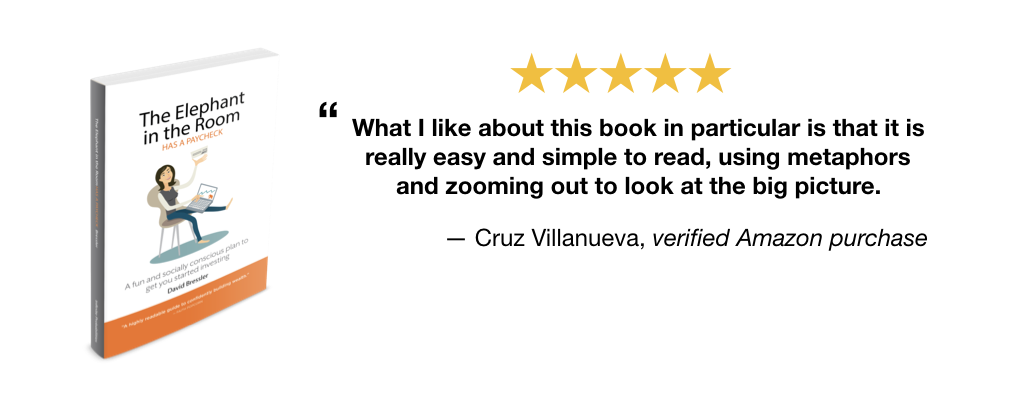This morning I’m thinking about key points of the Elephant’s Paycheck Blueprint. I’m always working to fine-tune how I introduce people to what I’m trying to share. What’s the trick to getting started investing?
It’s hard to get started. Where do you even begin?
A key point is the ability to get started modestly. Like with a few hundred dollars. Yeah, right? That’s crazy. Most places want you to invest thousands, or more, just to get some personal attention.
With a few hundred dollars you can build healthy habits sooner because you can get started easier and faster.
The trick is how to motivate people when there are such small amounts at play. Even if I could magically help you earn 10% on a $250 investment, that’s not much in terms of improving your life. I mean, I went to the movies over the weekend and it cost $27. If I helped you earn 10% a year on your investment, you couldn’t even go to one extra movie as a result. That’s not life changing.
In fact, 10% would be a great return. So, we need to measure what matters, and what matters is not the absolute return (the $25 in my example) but the % increase. And, we need to anticipate the impact of compounding of that return. For example, if you reinvesting the first year’s $25 gains, the second year earning the same 10% would give you $27.50, and the third $30.25. Still not life changing, but an increasing larger part of the money you started with.
To put that $30.25 in context as a percentage, that’s 12.1% of your initial investment!
Now, I can’t guarantee 10% returns (let alone 10% returns 3 years in a row!). But, I can help you understand how to find solid returns that present themselves with reduced risk as measured against our investing goals (less risk than the general population of stocks).
So, if we get year-over-year positive returns, and do it in a way that maximizes safety, the next trick is to motivate you to hold out for a few years (or more, many more) so that compounding and reinvesting have time to juice your returns. That’s perhaps more difficult, but gets easier over time. Researchers assume that people don’t want to think long term. I disagree. We buy 30 year mortgages. As parents, we save 20 years for our kids’ college. We plan our careers with an expectation of working almost 50 years. We can think long term when other barriers are out of the way. Fear of not knowing what to do, and understanding how well we’re doing are two of those barriers.


Let me know what you think